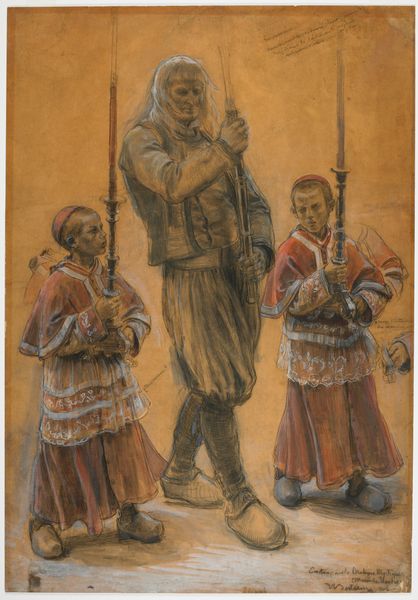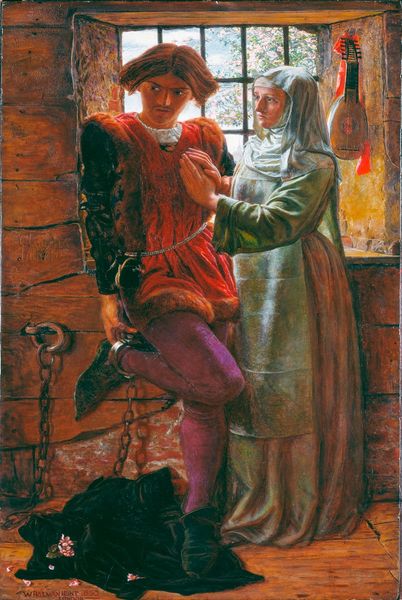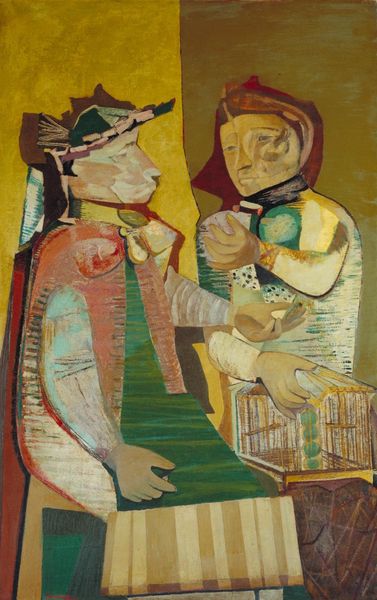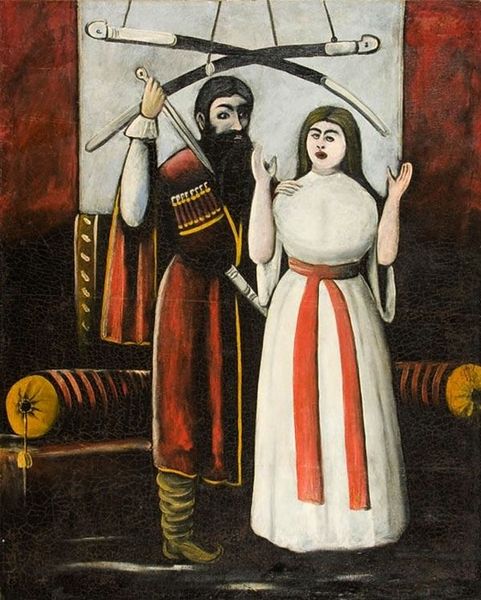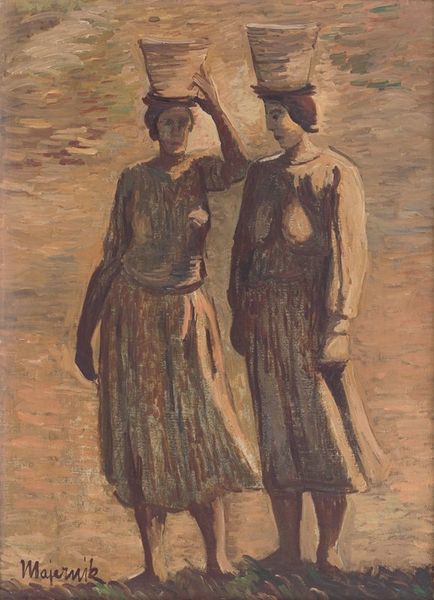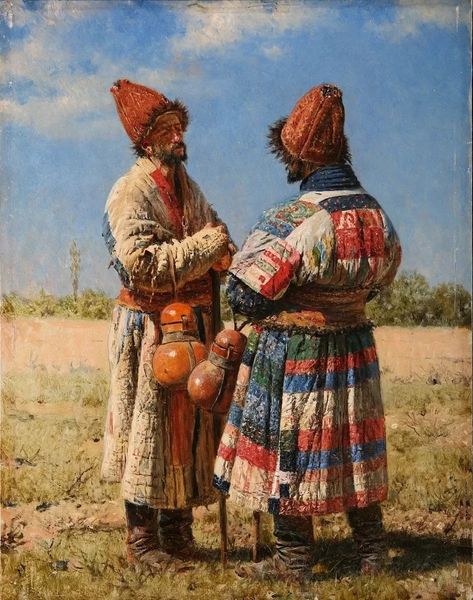
painting, oil-paint
#
contemporary
#
painting
#
oil-paint
#
oil painting
#
acrylic on canvas
#
folk-art
#
genre-painting
#
realism
Copyright: Oleh Denysenko,Fair Use
Curator: We're looking at Oleh Denysenko's 2014 oil painting, "Shadows Of Unforgotten Ancestors II." Editor: It's strikingly direct, isn't it? A couple rendered in a folk style stare out at the viewer. It has this peculiar stillness, like a paused photograph from a dream. Curator: That dream-like quality certainly pervades Denysenko's work. It draws from a deep well of cultural memory. Look at the details; the bird perched atop the woman's head, or the horse hovering over the man's brow. Those aren't arbitrary decorations. Editor: Right, they feel loaded with meaning. Almost like cultural heraldry. How do those emblems connect, historically? Curator: Often, these motifs originate in pre-Christian Slavic beliefs, reworked over centuries into folk tales and rituals. Birds frequently symbolize the soul or messengers from the spirit world, whereas horses were seen as connected to the sun and strength. Think of these as concentrated symbols carrying ancestral memory. Editor: So it's more than just genre painting, a portrait of figures in traditional costume? There's a potent effort to access a deeper, symbolic language through the images themselves, in line with Ukrainian folk art. Curator: Precisely. Notice too, the faces aren't idealized; there's a stark realism. He isn't romanticizing the past but presenting it with a certain gravitas, hinting at the hardships inherent in their history. And within that historical weight, it suggests resilience. Editor: Yes, I see that tension now between the simple, folk-art style and that uncompromising gaze. The subdued color palette heightens it as well. The setting appears very shallow and undefined and all attention focuses on the figures themselves, almost imposing. What is the affect the artist is intending by diminishing all but the two figures themselves? Curator: To concentrate the entire semiotic weight into these people and their story, to keep the cultural memory alive, as a continuous visual dialogue with tradition. It reminds viewers, perhaps, that folk memory isn't just quaint custom, but can also be resistance. Editor: That emphasis shifts my perspective quite a bit. Now the entire canvas feels like a conscious reclaiming of something precious threatened with being lost, a vivid claim to a legacy. Curator: Exactly. The unforgotten ancestors continue to speak to us.
Comments
No comments
Be the first to comment and join the conversation on the ultimate creative platform.

